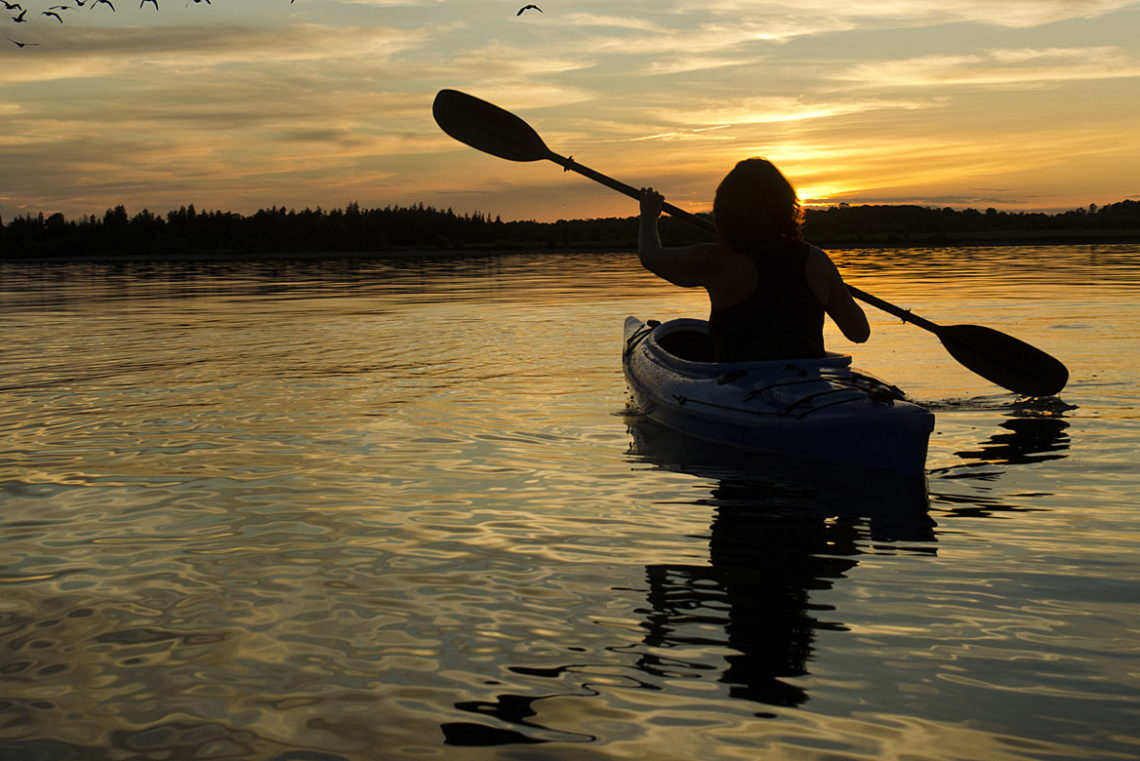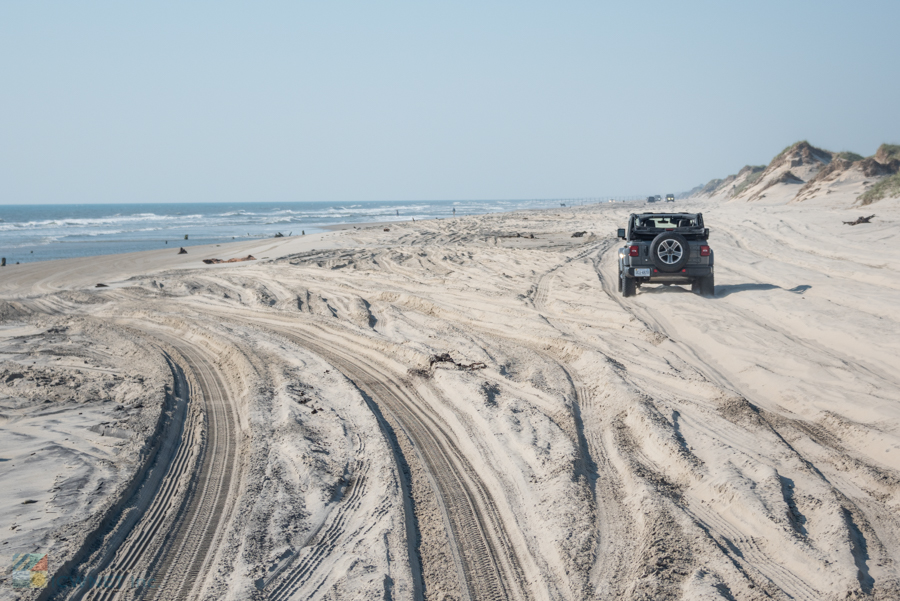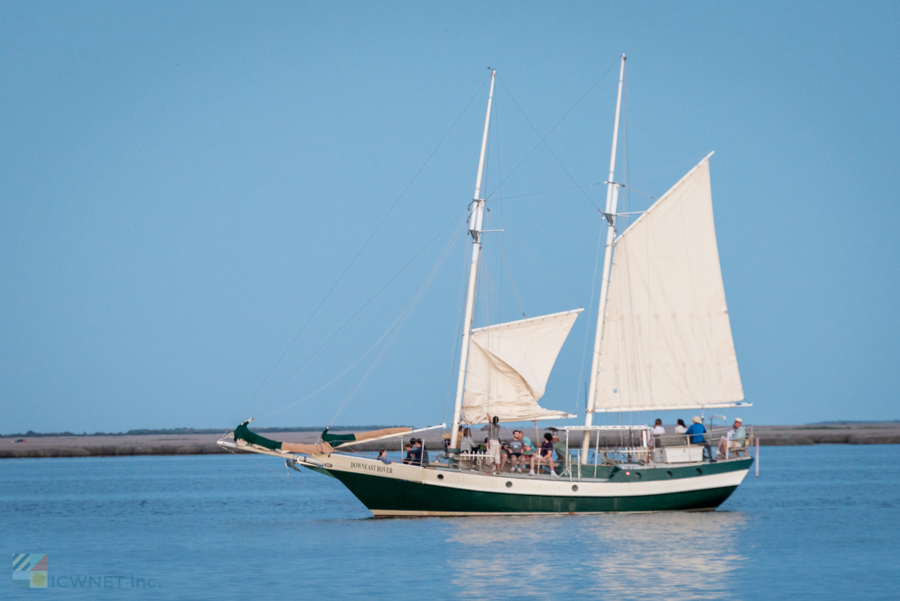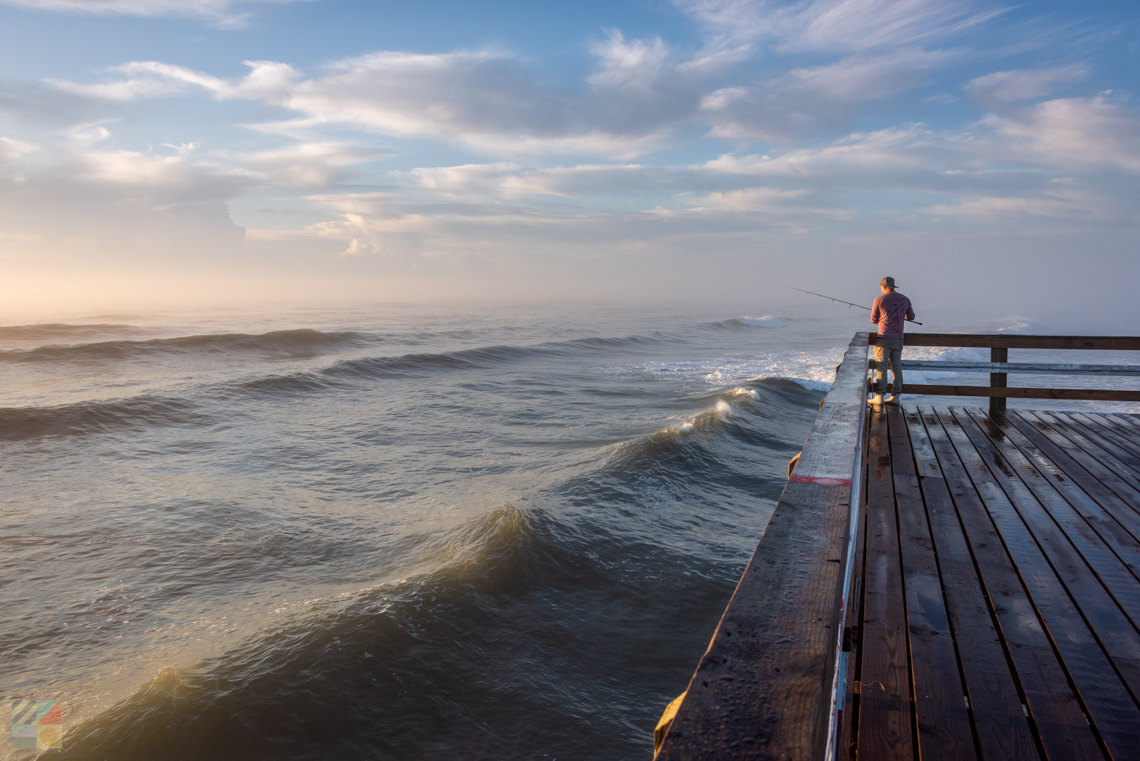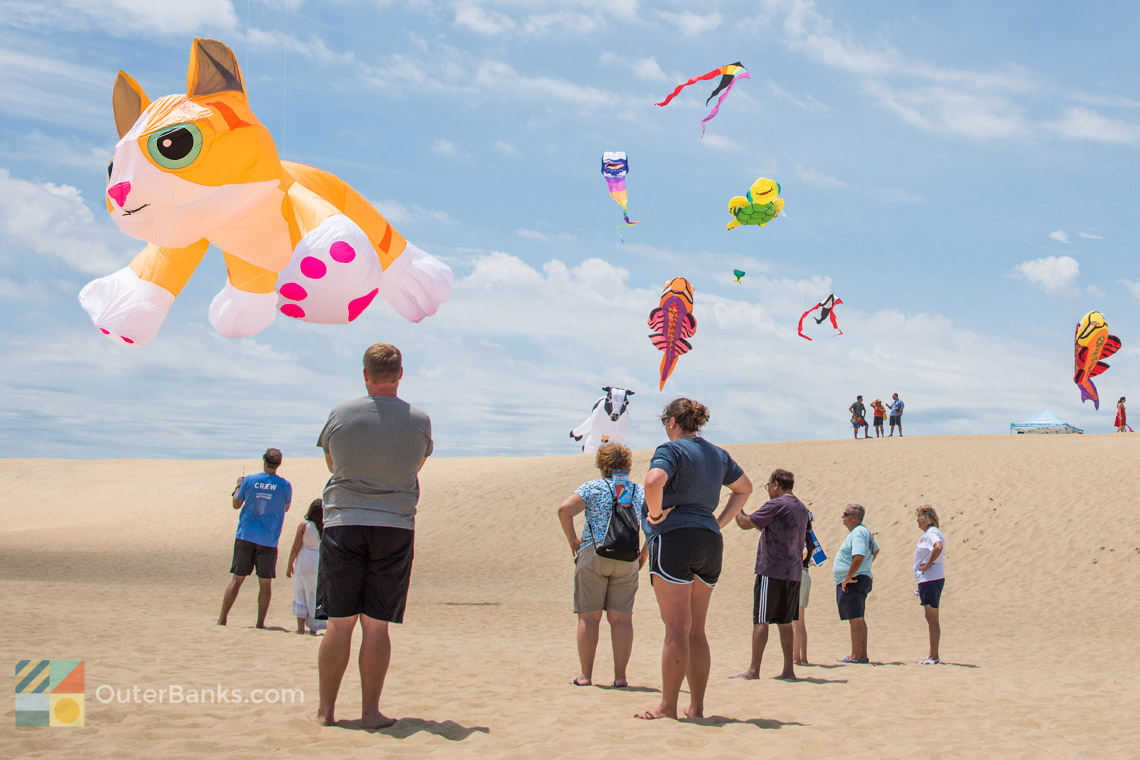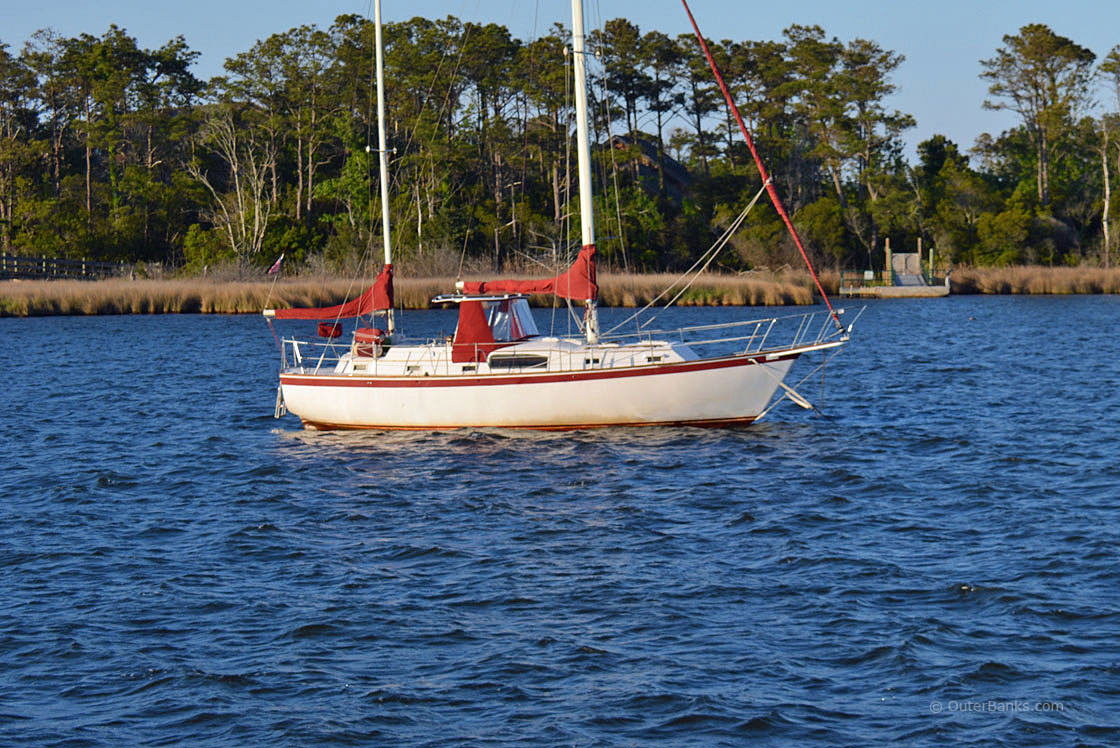Vacationers who want to set themselves apart from the standard summer crowd should consider a visit to the Outer Banks in the shoulder seasons.
Loosely defined as the weeks outside of the busy June, July and August summer months, the shoulder Seasons are an ideal time for young families, adventurous retirees, dedicated anglers, and water sports lovers of all genres.
While it's tough to beat the allure of a warm summer's day on the Outer Banks, when the beaches are refreshing and the towns are packed with people and attractions, the shoulder seasons give regular vacationers a chance to experience the Outer Banks in an entirely different light. With uncrowded beaches, cooler evenings and plenty of shops, restaurants and attractions still wide open for business, many long term vacationers swear that the shoulder season is the best time to enjoy the delicate beauty of the Outer Banks, while foregoing the hustle and bustle.
If your dream vacation consists of miles of privacy, and slightly less activity in favor of more beach time, or if you're an enthusiastic kiteboarder, windsurfer or fishermen that wants to enjoy the sports at their absolute best, then consider scheduling your vacation during the shoulder seasons. A fantastic and budget-friendly time of year, visitors are urged to make their reservations now, before the secret is out about how spectacular the Outer Banks is during the late spring and early fall.
Accommodations during the Shoulder Seasons
Many shoulder season regulars attest that one of the best aspects of vacationing during this time of year, besides the ample supply of uncrowded beaches, is the price. The spring and fall months, because they are well outside the prime summer weeks, are generally cheaper in all aspects, including dining, shopping and, most noticeably, accommodations.
Most all vacation rental companies organize their rental rate structure by season. The most in-demand weeks and months, specifically during the summer, are the highest, and the rates gradually reduce on either side of these prime rental weeks.
The way each "season" of rates is divided varies from company to company, but as a rule of thumb, most companies have a prime season rate, an "in" season rate, a "mid" season rate, and an "off" season rate, or some variation of this scale.
With this logic in mind, an early spring or late fall visitor will spend much less for the same rental home as a prime summer visitor, essentially saving them hundreds of dollars before they even start their vacation.
There are some considerations to keep in mind for the budget conscious, however. For example, a vacation home with a private pool may charge for pool heat when the weather isn't warm enough to sustain a consistently warm pool temp, or vacation homes that offer local club or community pool access may only extend the membership to prime season guests, and / or when the club and facilities are open.
That said, fall and early spring visitors find that they can enjoy equally alluring amenities, such as warm hot tubs or a gas log fireplace on a cool beach evening, making the trade-off well worth it.
In addition to lower rates, many vacation home renters find that it is much easier to book a last minute reservation or partial stay in the shoulder seasons because of availability. While the June, July and August weeks tend to fill up quickly and months in advance, the spring and fall months aren't nearly as much in demand, making last-minute bookings for a week or even a 3-4 day stay an easy venture.
Hotels, motels, and bed and breakfasts also follow this pattern, with more gradual reductions depending on the hotel and the location. Some inns or accommodation providers even offer getaway packages for prospective shoulder season guests, with special rates or incentives depending on the time of year and local events. Be sure and check online for any current promotions, or simply ask your hotel or inn's staff when you call to make a reservation.
For campers, while a handful of privately owned campgrounds stay open well into the shoulder seasons, or even year round, the campgrounds managed by the National Park Service are generally only operational from Memorial Day until Labor Day. However, campers should definitely explore their options for spring and fall sites, as this is one of the best times of year to enjoy the Outer Banks' great outdoors. Temperatures are cooler, the mosquito population has generally dwindled, (depending on recent rainfall and air temps), and campgrounds are generally uncrowded allowing lots of privacy. Look into options at the KOA campground in Waves, or the Frisco Woods Campground which is hopping in the shoulder seasons because of its incredible Pamlico Sound proximity and water sports access.
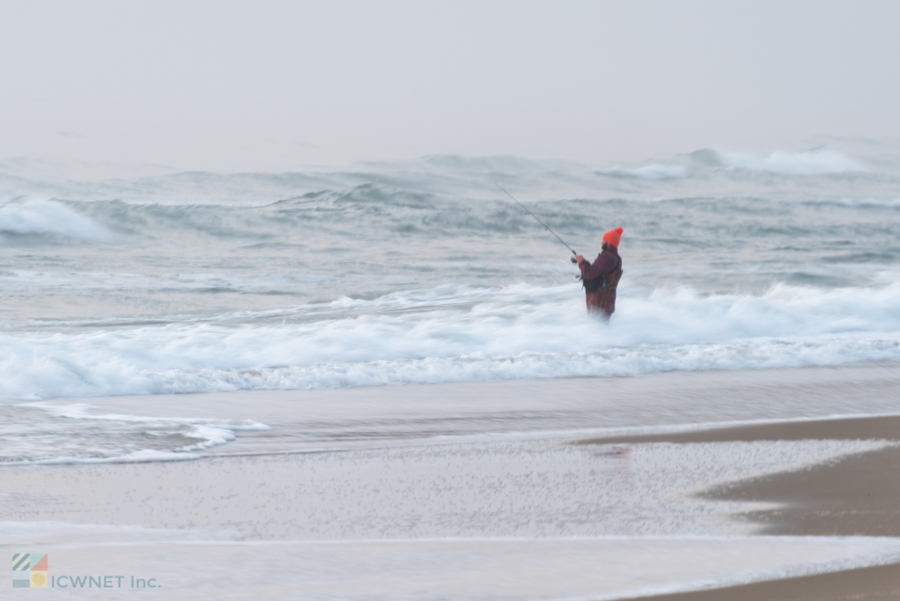
Temperature, climate and the Shoulder Season scene
The shoulder seasons do not have an official beginning or ending date. Instead, the shoulder season unofficially begins when the first wave of visitors start coming to the Outer Banks after the wintertime, and the stores, restaurants and vacation rental homes open their doors to welcome the early birds. Generally, by the time the East Coast schools let out and the beaches heat up, its summertime, and it remains this prime season until after Labor Day, when once again the population dwindles and local businesses make plans to shut down for another winter.
The exact starting and ending point for the shoulder seasons also vary by region. For example, the central Outer Banks towns of Nags Head, Kill Devil Hills and Kitty Hawk have a number of restaurants, shops, and businesses that are open year round, while the quieter Hatteras and Ocracoke Islands businesses may only remain open for about 6 months or so.
So while it's hard to pinpoint an exact "shoulder season," many vacation rental companies, businesses, and frequent visitors consider it to be the spring months of April and May, and the fall months of September and October, (although in some circles, March and November are considered part of the Shoulder Season as well.)
Each side of the shoulder season, aka the spring and the fall, has its own unique characteristic climate-wise that are entirely different from the summer.
The spring on the Outer Banks is known for its consistently breezy days, budding flowers, and cooler daily temperatures. While air temps can vary widely, generally between 50-80 degrees, many vacationers find that the average weather is just cool enough for a light jacket in the evenings, and shorts and sunscreen during the daytime.
In the spring, shoulder season vacationers can expect to share the shoreline with dozens if not hundreds of windsurfers and kiteboarders. For most visitors, this is an exceptionally pleasant surprise, as the expanse of kites of all colors bobbing over the Pamlico, Currituck, Roanoke, or Croatan Sound is a truly incredible sight.
Due to these perfect water and wind conditions, a number of sound-based watersport events and competitions are held in the spring, like the internationally renowned Tripe-S Invitational, which is held every April in Waves.
Generally, the sound waters also begin to warm up in late April, although a wet-suit or spring suit can still come in handy. The ocean waters, however, typically remain a little too cool for swimming until mid-to-late May. This varies, however, depending on region, as while the ocean in front of a stretch of beach in Corolla might be chilly, the same ocean on an Ocracoke beach may be a lot warmer. With over 150 miles of Outer Banks shoreline, it's not surprising that water temps can vary greatly from one region to another.
One the other side of the vacation spectrum, the fall has a number of similar characteristics to spring on the Outer Banks, including steady breezes and cooler nights, but has a completely different climate and "feel" all its own.
In the fall, vacationers can still enjoy warm ocean temperatures, since just as the ocean may take a few weeks to warm up, it also takes a few weeks to cool back down. In fact, many Outer Banks vacationers, (again depending on region), find they can enjoy ocean swimming until mid-October or even later. Just be sure and bring a big, warm towel, as while the ocean may still be warm, the cool air and salty breezes are a little chilly getting out of the water.
The landscape also changes, as the sea oats start to brown and fade along the beaches, and are replaced with patterns of bright yellow and red wildflowers. This is especially noticeable along NC Highway 12 on the Cape Hatteras National Seashore, where drivers along both Hatteras and Ocracoke Islands will notice a blaze of yellow and red flowers on either side of the highway.
The only drawback to a fall vacation is the potential for hurricanes. The Atlantic Hurricane season technically runs from July 1st until the end of December, but on the Outer Banks, the majority of hurricanes or tropical storms that have affected the coast have historically arrived in August or September. There are options available to mediate this risk, like trip insurance, and most vacationers find the gamble well worth the atmosphere, the warm weather, and the miles of vacant beaches.
During both the spring and fall shoulder seasons, vacationers will enjoy fewer people and uncrowded roads. The crowd along the beaches is generally a mix of older couples, young families with children who are not quite old enough for school, water sports lovers, and avid fishermen. And while a handful of restaurants, shops, or attractions close up shop after Labor Day, many more remain open to cater to the gradually increasing population of shoulder season visitors.
Activities, Attractions and Amenities of the Shoulder Seasons
The shoulder seasons are arguably the best time for some of the Outer Banks' most popular activities, hence this time of year's popularity with certain styles of visitors.
Anglers come like clockwork to the beaches and local fishing piers every spring and fall for the incredible fishing that is seasonally at its best during the shoulder seasons. For this reason, a number of surf fishing tournaments are held in the spring and fall months, specifically the tournaments that target red drum.
The red drum is one of the most popular game fish for local and visiting surf fishermen, as it's one of the largest (and tastiest) that can be pulled out of the water with a fishing rod. The Outer Banks has had several historically impressive red drum catches on the record books, including a 60+pounder that was recently hauled in from the Avon Pier.
Red Drum typically only appear twice along these shores, as they migrate south or north depending on the season. When they come to visit, they come in droves, with hundreds if not thousands parading along the coastline, just yards away from the shore. As such, the Outer Banks has gained recognition as one of the best places on the East Coast to land one, and fishermen from across the country make semi-annual trips to the beaches to test their luck.
In addition to the incredible fishing, the shoulder seasons also indicate the times of year when some of the most popular 4WD accessible beaches, like Cape Point, Oregon Inlet, Hatteras Inlet and Ocracoke Inlet, are accessible to both pedestrians and vehicles. These beaches close seasonally due to threatened species breeding or nesting seasons, but are usually wide open in the early spring, and by the time late September rolls around.
Red Drum aren't the only species who pass through the Outer Banks on their long coastal migrations, and birders will find plenty to crow about during the shoulder seasons as well.
The spring and fall are when hundreds of different kinds of birds make a temporary home on the Outer Banks, particularly in the local refuges and preserves, like the Pea Island National Wildlife Refuge, the Currituck Banks Coastal Estuarine Preserve, or Nags Head and Kitty Hawk woods. Because of this, birders can expect to spot a number of species that typically don't flock to a barrier island eco-system, including snow geese, Canadian geese, wading birds, and even white swans. Fall birders can even attend the annual Wings Over Water festival, a week-long culmination of special classes, seminars, and tours through some of the Outer Banks' best birding locales.
The shoulder seasons are also seemingly designed with water sports lovers in mind. Fall and spring vacationers will find incredible kiteboarding, windsurfing, hang gliding, and even surfing from Corolla to Ocracoke, with miles of open water to cruise.
During the shoulder season months, the Outer Banks stays consistently windy, usually with a steady breeze of 10-20 mph, and gusts of up to 30 mph or more. In addition, the waters along the local sounds (as well as the air temperatures) are relatively warm and tolerable for long period of time with a light spring wet suit. The capper is a still relatively late sunset time, (generally around 6:00 - 8:00 p.m.), providing boarders with a full day of exploring, which is ended with an incredible sunset. These factors all combine to make the conditions absolutely ideal for boarders of every soundside sport, and as a result, hundreds congregate along the popular Kite Point or Canadian Hole beaches to enjoy the ride, socialize with other boarders from around the world, and simply enjoy their own little stretches of the soundside beach.
While surfing is notoriously good throughout the year, a spring swell or an offshore hurricane during the fall can make the great waves even better, and many surfers from neighboring states will head to the 'Banks when a coastal storm is brewing to take advantage of the big waves.
Beachcombers will also find plenty of reasons to enjoy the seasons, as with fewer crowds and more patches of beach that are relatively uncovered, shelling is an easy venture with little competition. A strong storm, on or offshore hurricane, can also whip up the ocean and produce some spectacular finds once the surf has calmed.
The shoulder seasons also host a number of seasonal events, like the Day at the Docks Festival, the Outer Banks Restaurant Week, the Outer Banks Bluegrass Festival, and the Outer Banks Bike Week, which were planned, in part, to attract more visitors to these uncrowded off-season months. With more events being added every year, specifically designed to bring in more shoulder season visitors, vacationers can expect a full calendar of events to enjoy on breezy, cooler off-the-beach days.
Tips and Tricks for Visiting during the shoulder Seasons
- Bargain hunters will love exploring the local shops during the shoulder seasons, as there are deals to be found at virtually every type of store. In the spring, many businesses are trying to empty out the previous year's stock to make room for new supplies, and in the fall, businesses are trying to make a few last sales before closing down for the season. This model can be found everywhere, from clothing boutiques to souvenir stores to surf shops, and shoulder season buyers will reap the rewards.
- Perhaps one of the biggest and best discounts to be found is at local water sports equipment suppliers and rental companies, where in the late fall, shoppers can enjoy huge discounts on slightly used kayaks, windsurfing and kiteboarding equipment, bicycles, and even surfboards. These discounts are generally on rentals that were used throughout the summer, but have little wear and tear and are simply retired for the season. For buyers in the market for big ticket sporting equipment, late fall is the best time to go shopping.
- Another benefit to visitors in a hurry is that generally once the shoulder seasons hit, so do the increases in regional speed limits. (For example, while the speed limit throughout the seven villages on Hatteras Island is 35 mph during the more-crowded summer months, for the rest of the year, it's a steady 45 mph.) In addition to faster travelling times, newcomers will also enjoy less congestion and traffic, making an island-spanning road trip, or a day drive to visit all four lighthouses, an attractive, and completely easy endeavor.
- Late summer and fall visitors, particularly those who are staying for a week, should consider purchasing trip insurance before their shoulder season vacation. With the threat of hurricanes at its highest during the fall, trip insurance provides travelers with a little peace of mind in case their vacation is cut short or cancelled due to an impending storm. The cost of insurance is usually a percentage of the total rental cost, and can be obtained via your vacation rental company, or purchased separately through a number of national provides, such as CSA, Trip Preserver, and Red Sky. Trip insurance also covers cancellations due to illness, emergencies, and other situations, ensuring that regardless of the situation, you can relax knowing that your vacation investment is secured.
- Last minute stays are particularly easy during the shoulder seasons. Most vacation rental companies rent homes on a weekly basis, and as such, only allow "partial" week reservations, or stays of 3-6 days, two weeks in advance or less. Because of availability, last minute vacationers will find lots of options. This also applies to other accommodations, such as hotels, motels, and bed and breakfasts, which generally have plenty of vacancies in the shoulder seasons, even the day of a reservation for spur-of-the-moment Outer Banks vacationers.
- Weather a bit too breezy to lounge away on the beaches? Go take a hike. The fall and spring months are an ideal time to explore the refuges, preserves, and hiking trails located throughout the season. With few bugs to worry about, but plenty of seasonal and migratory wildlife to admire, the shoulder seasons are an ideal time to explore the wild landscape of the Outer Banks off the beach.
More and more vacationers are discovering the crisp spring and fall months are an ideal time to plan an OBX beach vacation. With the waves of summer visitors all gone, and miles of seclusion and gorgeous beaches left in their wake, the shoulders seasons are arguably one of the most peaceful and relaxing times to visit the Outer Banks' seashores.
Incredibly popular with fishermen, birders, kiteboarders, windsurfers and beachcombers, it's almost surprising that with this notoriety the beaches remain as deserted as they do. But vacationers of all genres will be delighted to discover that a shoulder season vacation doesn't just please the anglers and kiteboarders in your group, it's also an ideal time to relax, shop, and simply enjoy a fantastic new perspective of the Outer Banks, all while saving a buck or two.
Craving a little more Outer Banks after your summer vacation, or interested in experiencing the OBX from a new perspective? Consider a fall or spring weekend trip to get your toes wet in the shoulder season scene. Chances are that after a cool fall or spring day at a quietly serene beach, you'll discover that the Outer Banks is an incredible destination in all seasons.
-
OBX Wedding Fest
January 16th, 2026 - January 18th, 2026 -
Hatteras Island Oyster Roast
February 7th, 2026 1:00 PM - 4:00 PM -
First Friday in Manteo
March 6th, 2026 6:00 PM - 8:00 PM
Sound Feet Shoes is family owned and operated. Sound Feet has been in the retail shoe business for over 72 years, opening their first store in 1953. They provide the best customer service and are the only Outer Banks’ area full service shoe...
The Roanoke Marshes lighthouse is often one of the most overlooked of the Outer Banks lighthouses, simply because of its small stature, limited visibility and remote location tucked away at the quiet east end of the Manteo waterfront.
For more than 30 years, Resort Realty has been providing unforgettable Outer Banks vacations. From Corolla to Hatteras Island, Resort Realty offers nearly 550 Outer Banks vacation homes that range from cozy 1-bedroom condos to exquisite...
Vacationers will notice a handful of sailboats at every local Outer Banks port, either saddled up to the docks or breezing across the harbor, en route to the nearest sound for a cruise, or to the continent-spanning Intracoastal Waterway to continue...
ZoomAround Street Legal Golf Cart Rentals provides our communities and our visitors with fun, safe and convenient access to innovative transportation while providing an unparalleled customer experience. Don’t carry all of your beach gear...
With 150 miles of pristine coastline, and some of the East Coast's largest swaths of undisturbed maritime forest, the Outer Banks is a popular destination for nature lovers. As an important spot on America's "Flyway," which is the route that...
Check out Corolla's newest 5-star attraction! Pirate-Themed 18-Hole Minature Golf Course and Arcade with waterfalls, a pirate ship, caves, skulls, and more! So much fun for the whole family! Come...
